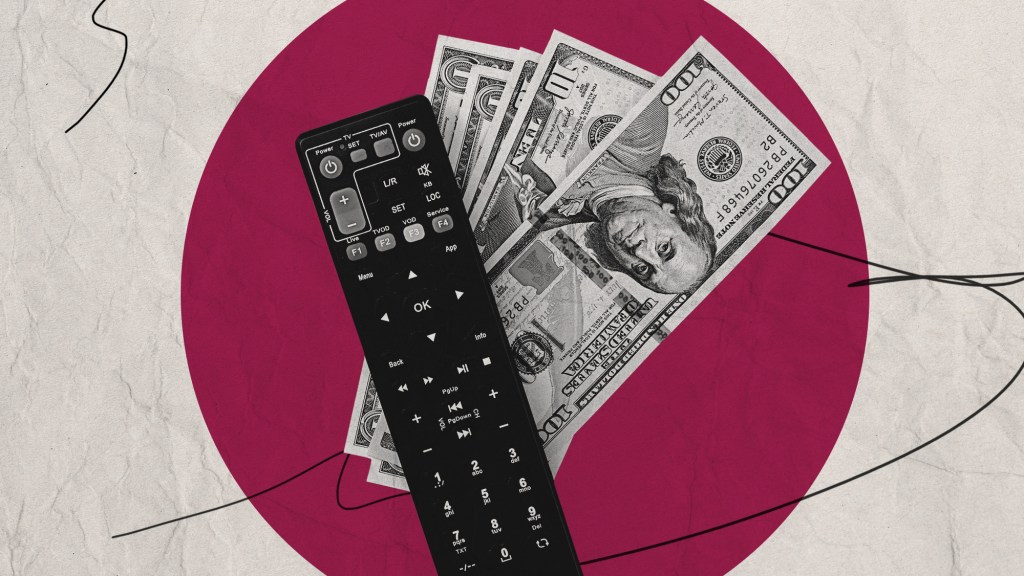Actors will get a somewhat larger piece of the streaming pie under the tentative agreement they made with studios and streamers — and the deal has a wrinkle that sets it apart from other recent contracts between Hollywood guilds and the Alliance of Motion Picture and Television Producers.
Under the proposed new contract, which SAG-AFTRA‘s national board has approved, members will be entitled to what the union is calling a “streaming participation bonus” for high-performing original streaming series and films. It includes a success formula similar to that in the Writers Guild of America’s Contract, but the actors union differs in how it will pay those residuals to performers than both the WGA and the Directors Guild of America, whose contract doesn’t include success-based payments.
How SAG-AFTRA Got Here
In its initial proposal to media companies, the actors union had asked for a 2 percent cut (later bumped down to 1 percent) of any revenue generated for a streaming service by a given project, to be shared among the series or film’s cast. SAG-AFTRA also proposed using the “content valuation” tool from measurement company Parrot Analytics. That tool uses Parrot’s proprietary audience demand metric — which includes several factors but gives video consumption the most weight — and publicly available revenue figures from streamers to arrive at a for how much revenue any title brings to a platform.
The AMPTP balked at the idea, saying it had “fundamental objections” to introducing that kind of revenue sharing. It also cast doubts on using Parrot Analytics’ tool to determine revenue sharing payouts; SAG-AFTRA countered that it would be happy to look at streamers’ books or come up with an alternative.
When negotiations resumed in October, SAG-AFTRA shifted to a flat fee per subscriber model, under which it would take the number of subscribers worldwide for a given streaming platform and multiply that by the percentage of content viewed on that platform covered under a SAG-AFTRA agreement and by a cost factor of 27.6 cents per quarter. The union said that would equate to about 57 cents per subscriber per year, as it does not cover all content on the platform. (The AMPTP claimed the union at first proposed $1 per subscriber per year, then later reduced that figure.) Revenue would go into a fund managed by representatives from both SAG-AFTRA and management, whose trustees would determine how to distribute it. After again saying the subscriber fee was a non-starter — Netflix co-CEO Ted Sarandos called it “a bridge too far” — the AMPTP and the union found common ground in the final hours of negotiations.
As SAG-AFTRA president Fran Drescher put it in a press conference discussing the deal, “It didn’t matter the mechanism, it didn’t even matter the amount, but we have to get into a new pocket” of revenue for actors on streaming shows and films.
How the Guild Deals Stack Up
The language on streaming residuals in SAG-AFTRA’s tentative agreement includes the same success benchmark that’s in the WGA contract, which its members overwhelmingly ratified in October. The definition of a streaming “view” is also the same for both unions: total viewing time for a film or season of TV divided by running time.
Also in both contracts: The extra residual kicks in when the equivalent of 20 percent or more of a streaming service’s domestic subscribers watch a TV season or movie in the first 90 days of an exhibition year. The actors union’s success bonus will double the fixed residual, above the WGA’s 50 percent bonus.
Where SAG-AFTRA splits from its peers is in the creation of a payment distribution fund. That fund, which will be jointly overseen by the union and AMPTP (and subject to legal review), will pay 75 percent of the bonus to performers on movies and series that reach the 20 percent threshold. The remaining 25 percent will be given to other performers on streaming series based on a set of as yet undetermined guidelines by the fund’s trustees, a provision that led one studio-side source to call it a “Robin Hood fund.”
The WGA’s success-based residual, in contrast, will apply only to writers who work on shows that cross that 20 percent benchmark. The DGA’s contract doesn’t feature any additional residuals tied to success on streaming.
All three guilds also secured gains to fixed residuals for streaming programing. The DGA, which made its deal in the spring, says residuals for streaming series will increase by 21.5 percent over the first three years of exhibition, including a 76 percent jump in foreign residuals. The WGA also says its foreign residuals will grow by 76 percent as they’ll now be based on subscriber counts outside the United States rather than a percentage of domestic subs. Similar language is in the SAG-AFTRA deal as well. The change to basing overseas residuals on subscriber counts could prove lucrative for all three guilds; more than two thirds of Netflix’s global subscribers, for instance, reside outside the United States and Canada.
Each guild contract also brings series and movies made for ad-supported streaming platforms — arguably the highest-growth segment of streaming — under the same terms as SVOD programs.




